Converting A Grass Area Into A Gardener's Playground

I recently helped a customer who was tired of mowing an area create a new garden bed. They had plans to pour a new concrete driveway and decided it would be an excellent time to start over with an area mostly grass and create a new bed of interest with various flowers, shrubs, and trees.
This new landscape bed will likely be a work in progress for many years. Or, as gardeners like to say, a new playground.
One of the smartest moves I make in a project like this is leaving the turf grass in place. It's a cost-effective decision, as removing it can significantly increase the project's cost. Plus, you avoid bringing in new soil, often with a fresh batch of weed seeds. So I just spray the grass with a grass killer. All the organic matter stays in place, and you have nearly a weed-free surface.
I installed plastic edging on the property line. It is the most economical choice and was necessary to provide an edge to contain the mulch and stop the grass next door from invading.
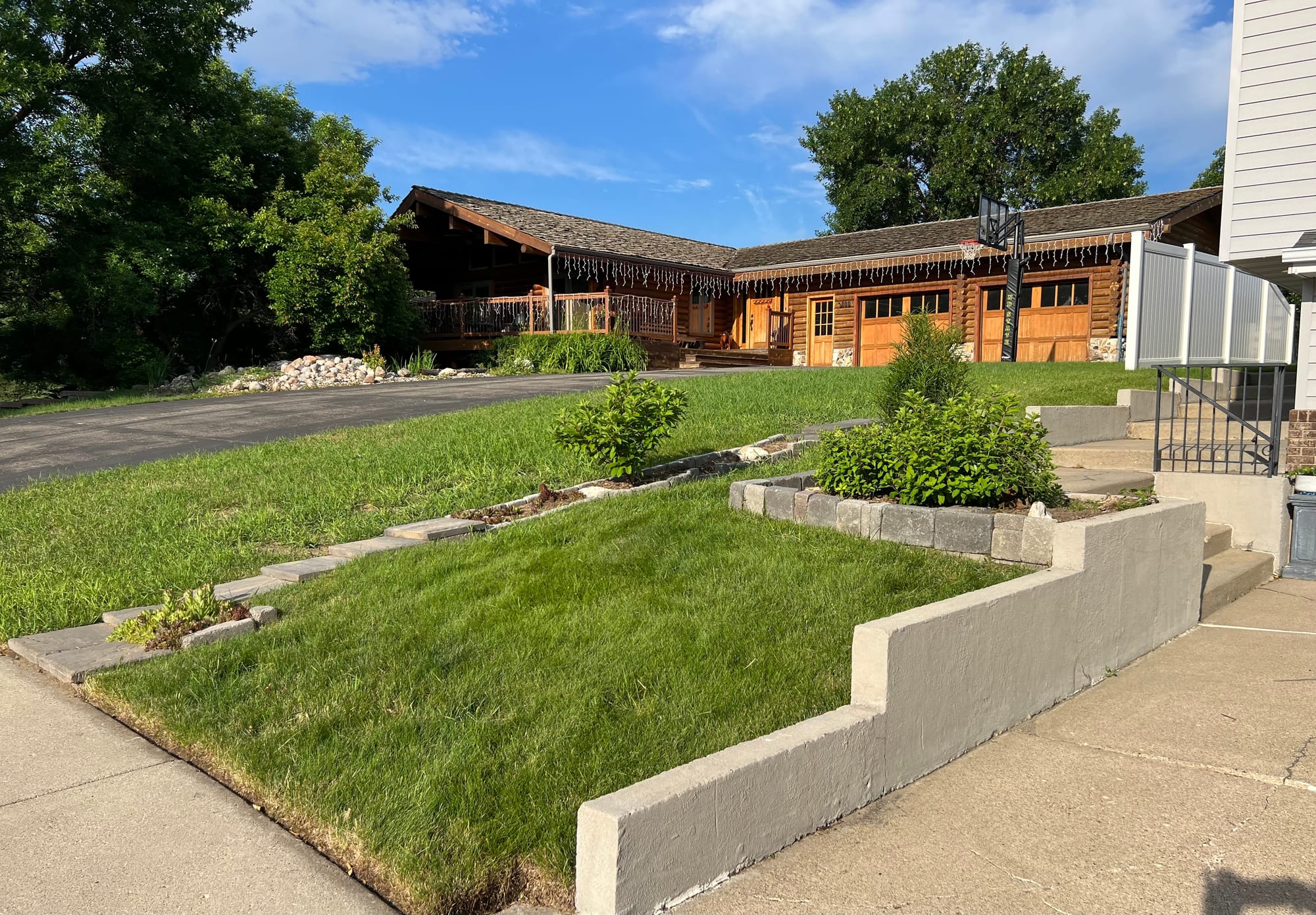
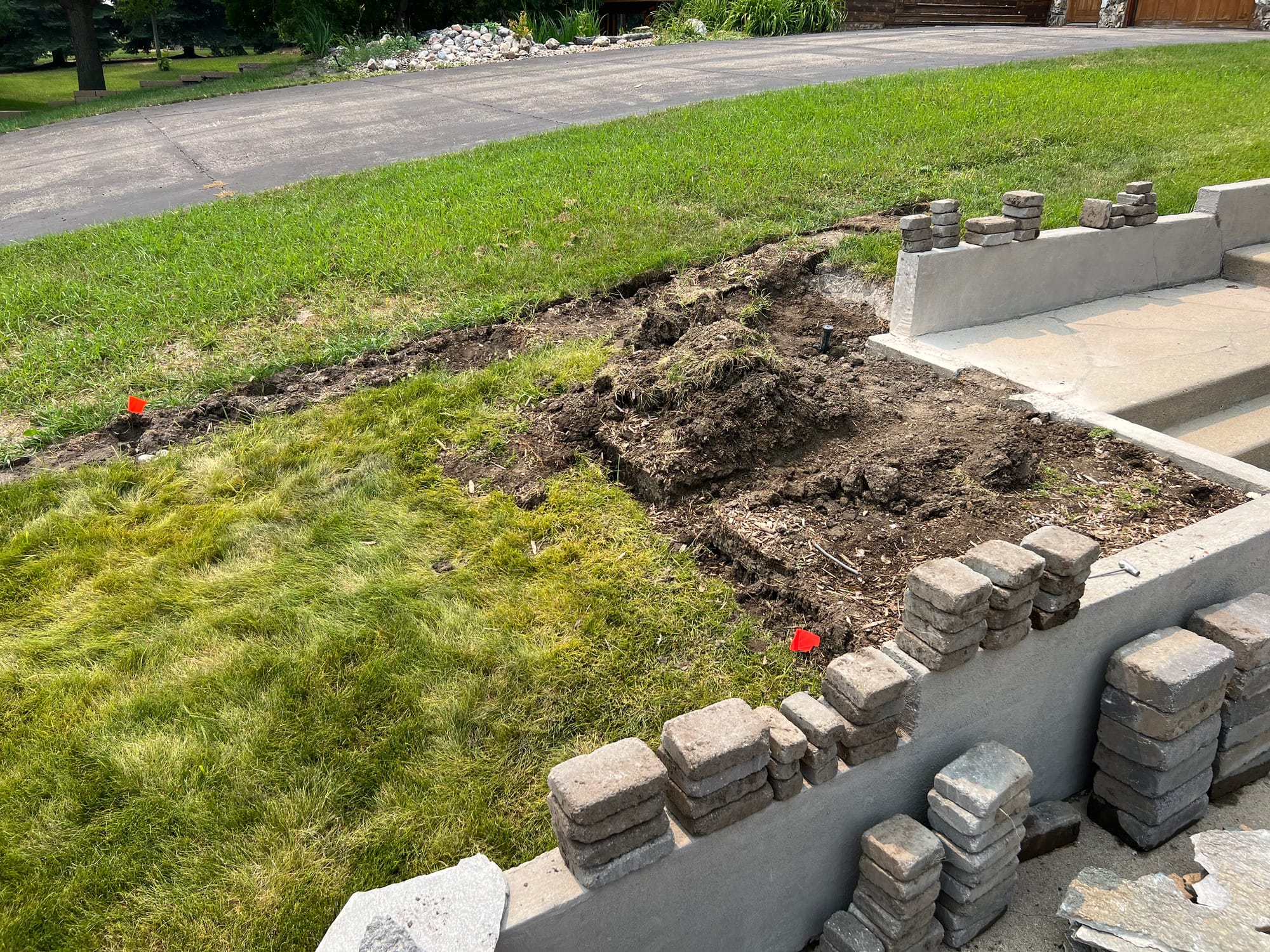
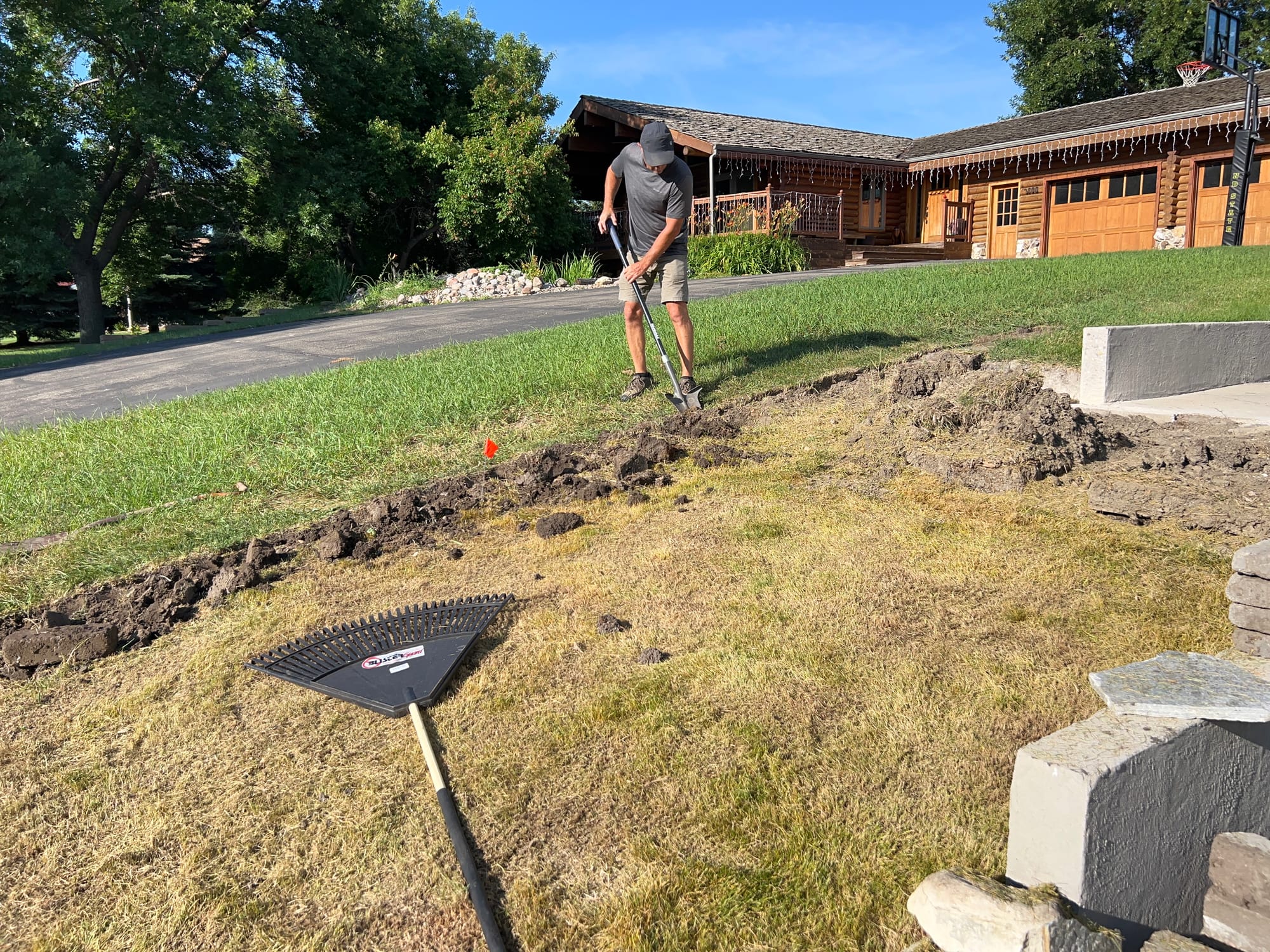
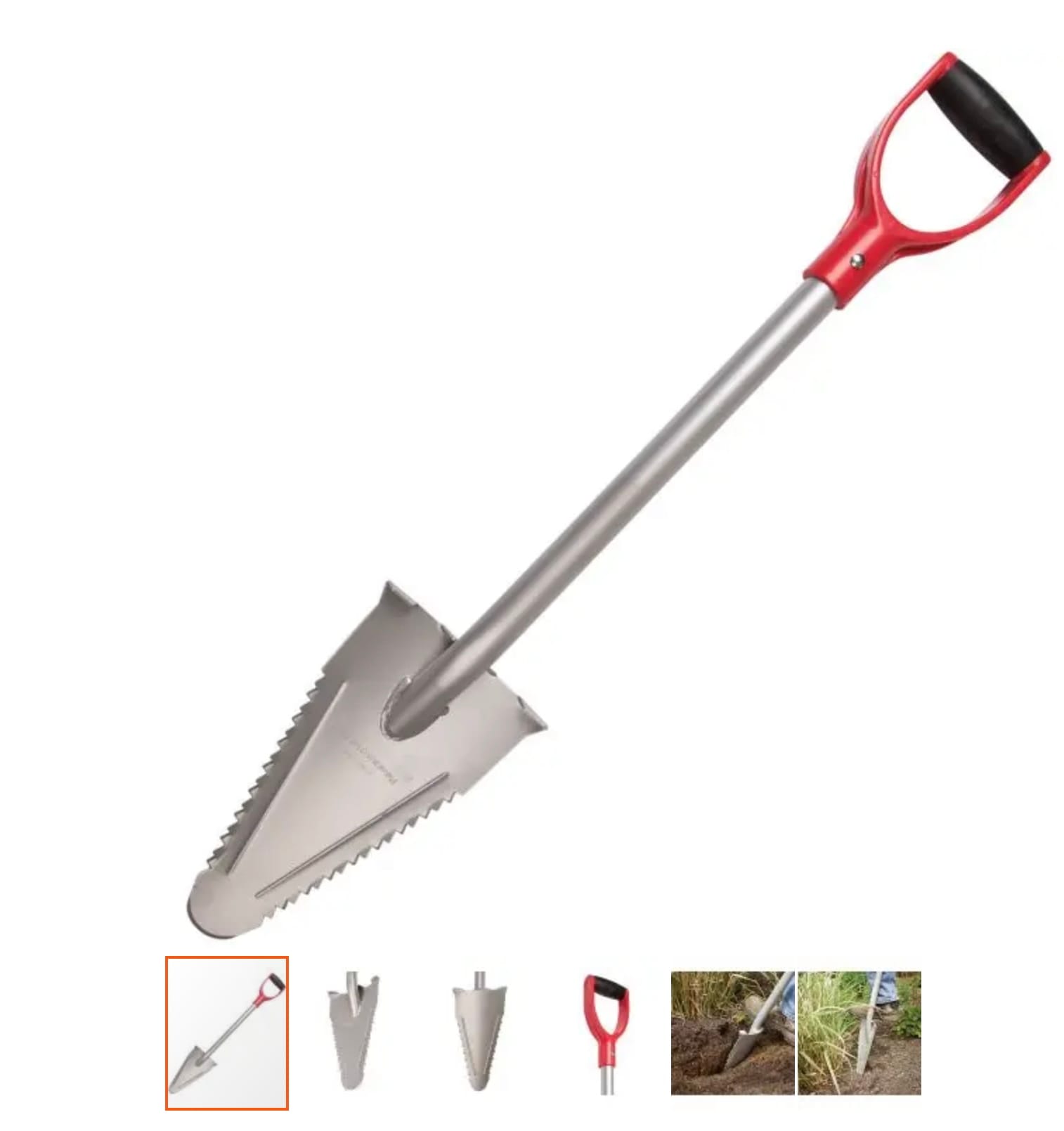
Root Assassin Steel Shovel, 32IN
Excellent for cutting through roots
Garden Hike is supported by its audience. When you purchase through links on this site, we may earn a small commission at no additional charge to you.
Creating the rock bed with the larger boulders is usually the most challenging part. There is a bit of art or a "feel" to it. And that "feel" does not always come quickly. I mimic nature as much as possible when creating rock gardens. I always bring extra rocks of various sizes to pick from, or it becomes almost impossible to develop a natural look. Also, when creating rock gardens, I often take breaks to work on other parts of the project to get different viewpoints and ideas. And you thought it was just a pile of rocks 😊.
You'll notice in the photos that rocks from 18" down to 1.5" are used in various combinations to create the effect I am looking for.
When using rock and wood mulch combinations in a bed, always try to have the rock at the higher points. Mulch at the higher points will work down into the rock due to wind and water movement, creating a messy or contaminated look.
The exception to that on this project is the rip-rap next to the sidewalk. Due to the sharp drop-off, the rip rap rock has been used in this situation to catch the mulch.
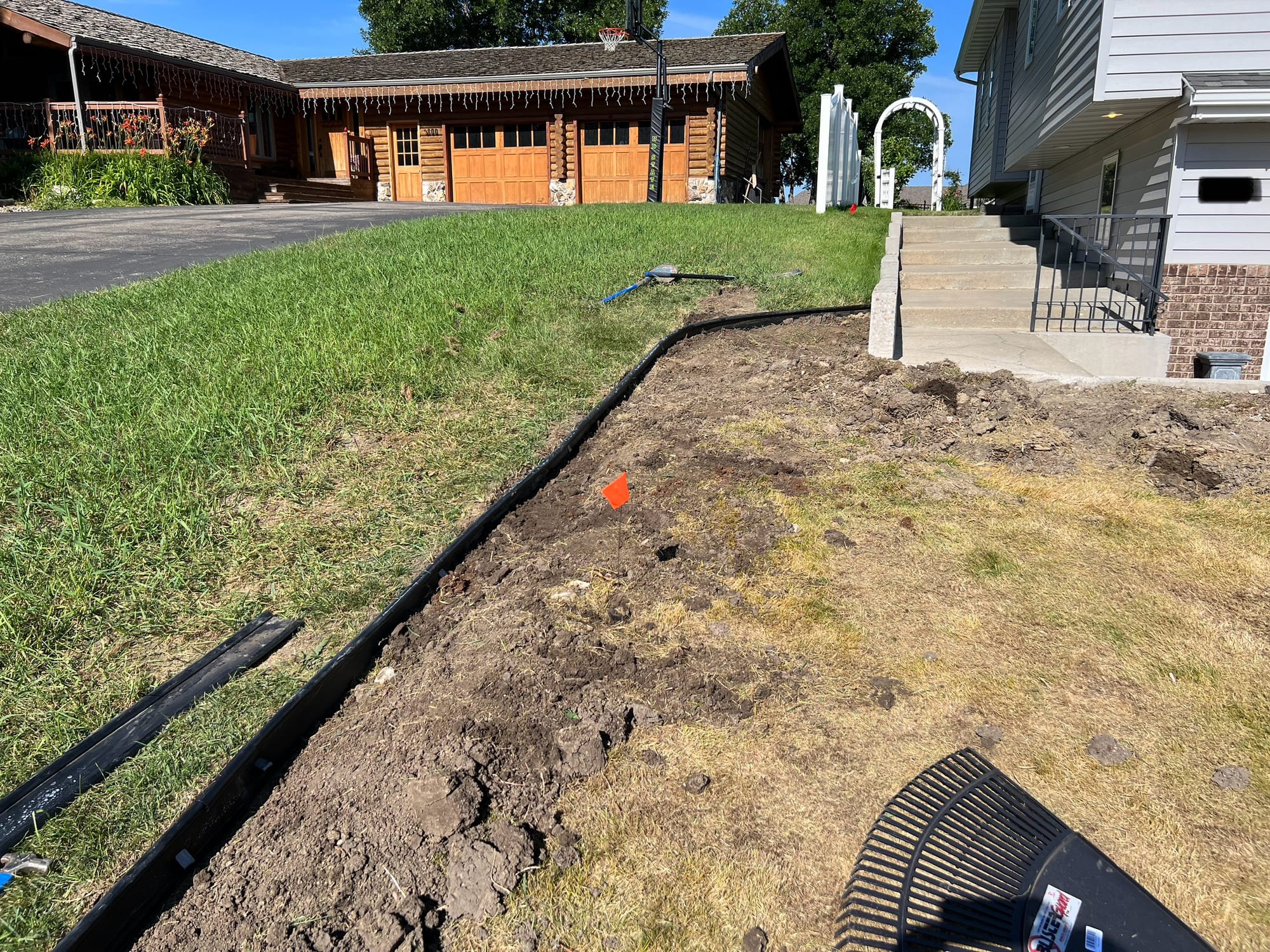
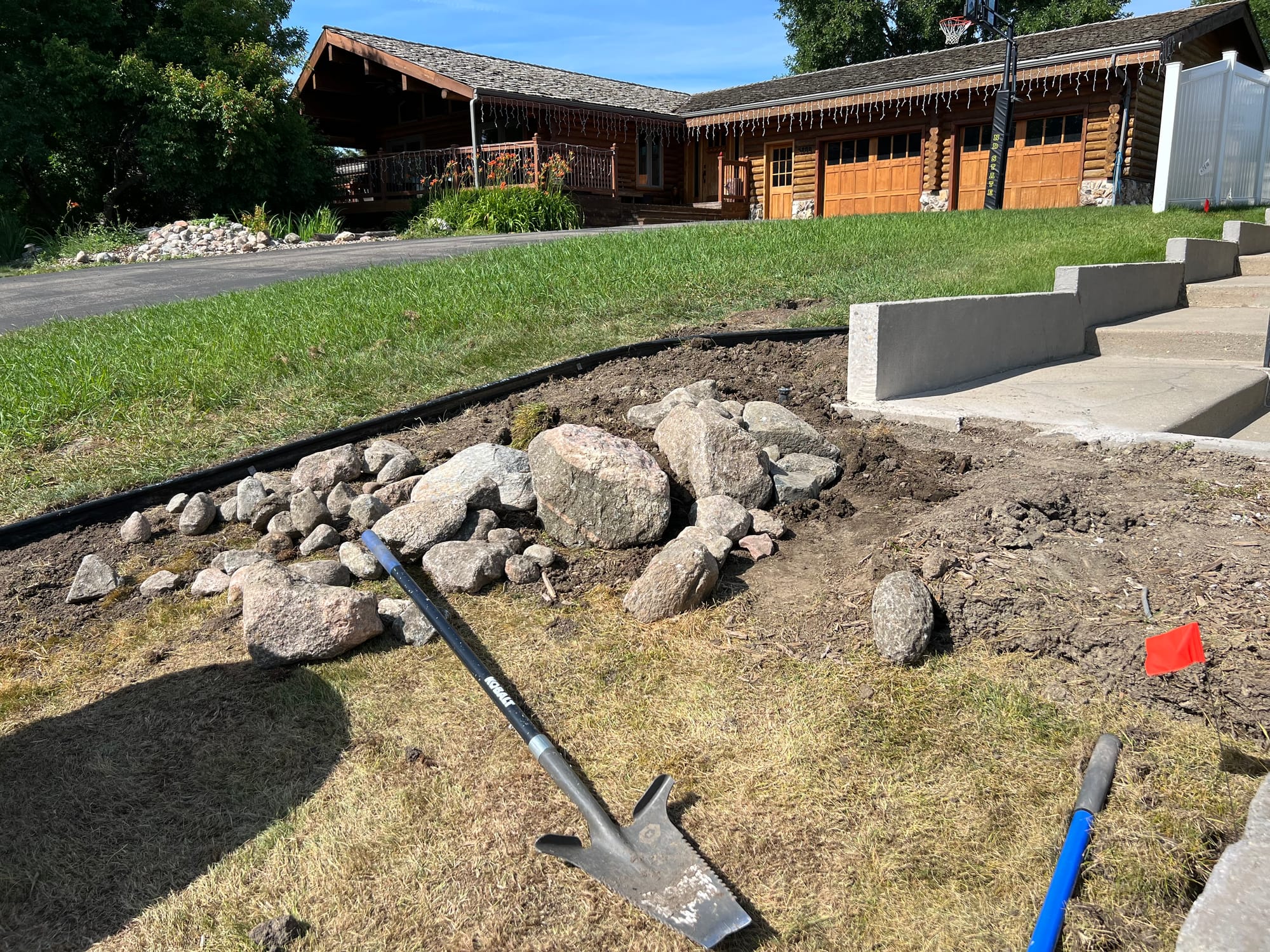
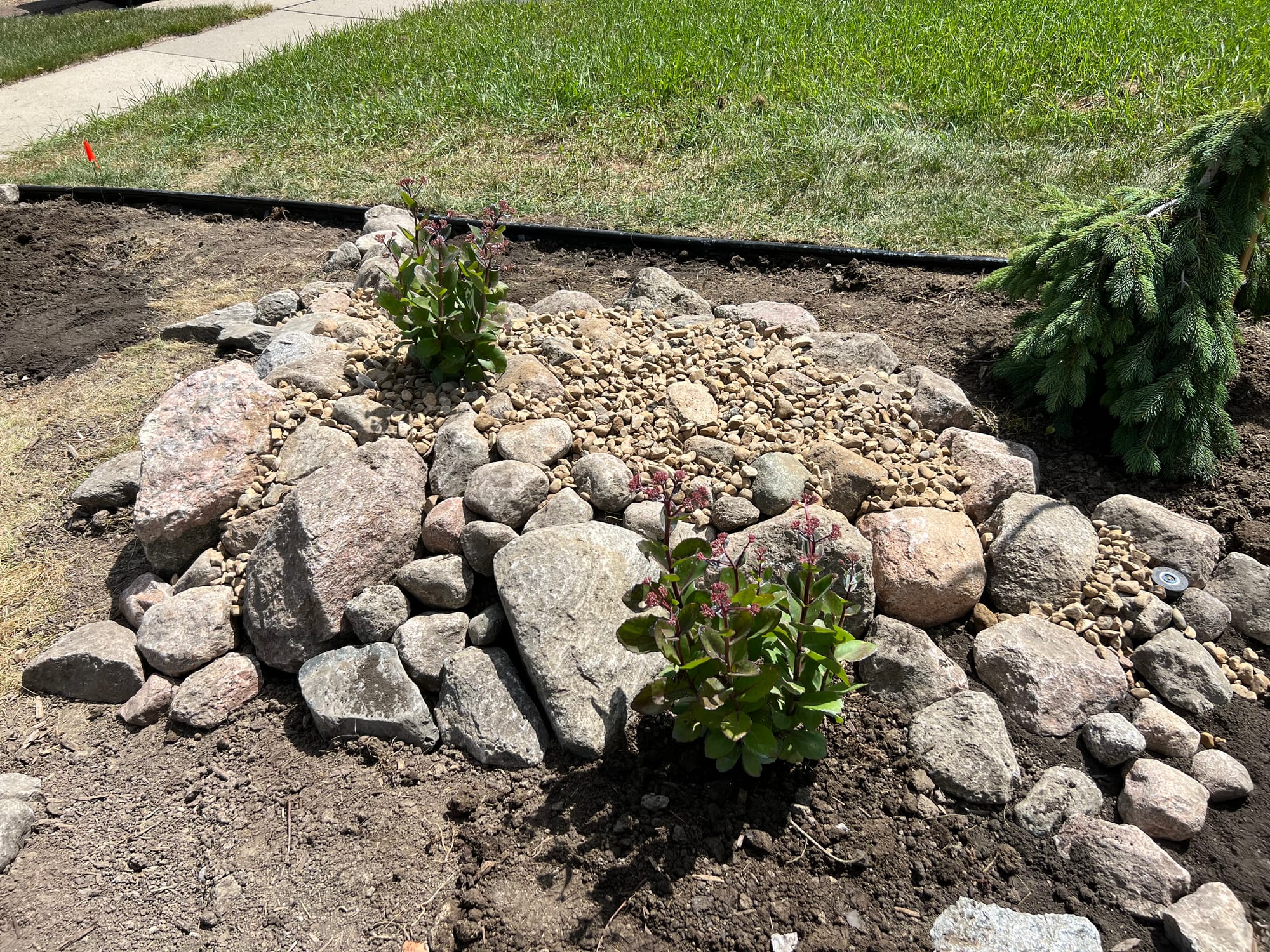
Once the rock bed is complete, it is an easy process to add the wood mulch. Mulch looks nice, provides weed control, and retains moisture.
The other benefit of mulch is the organic matter that it provides as it breaks down and how easy it is to move aside when working with new plantings. This is a playground, after all. 😊
The homeowner will add plants to this new bed as time goes by. I look forward to driving by each year to see how the bed develops.
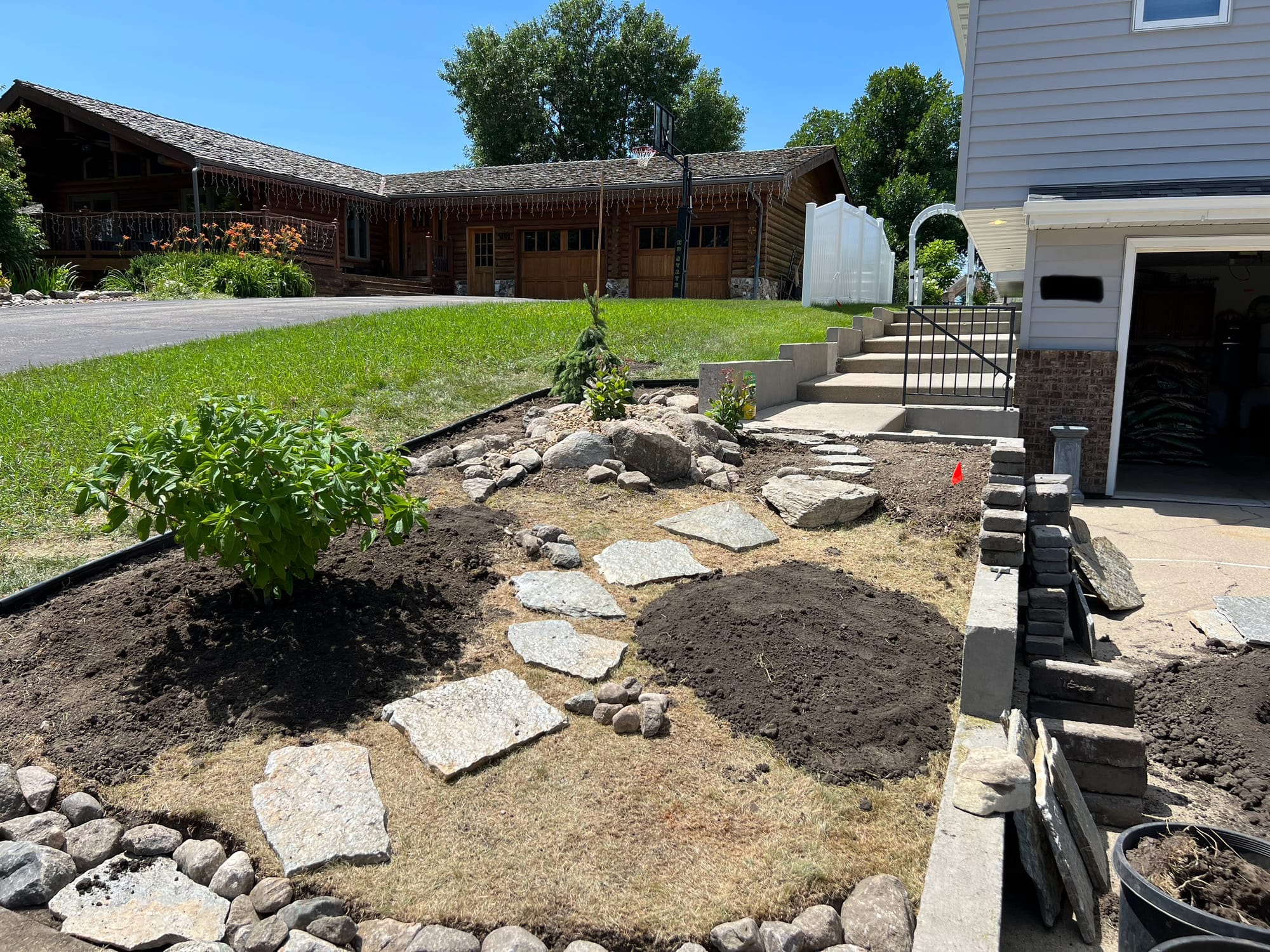
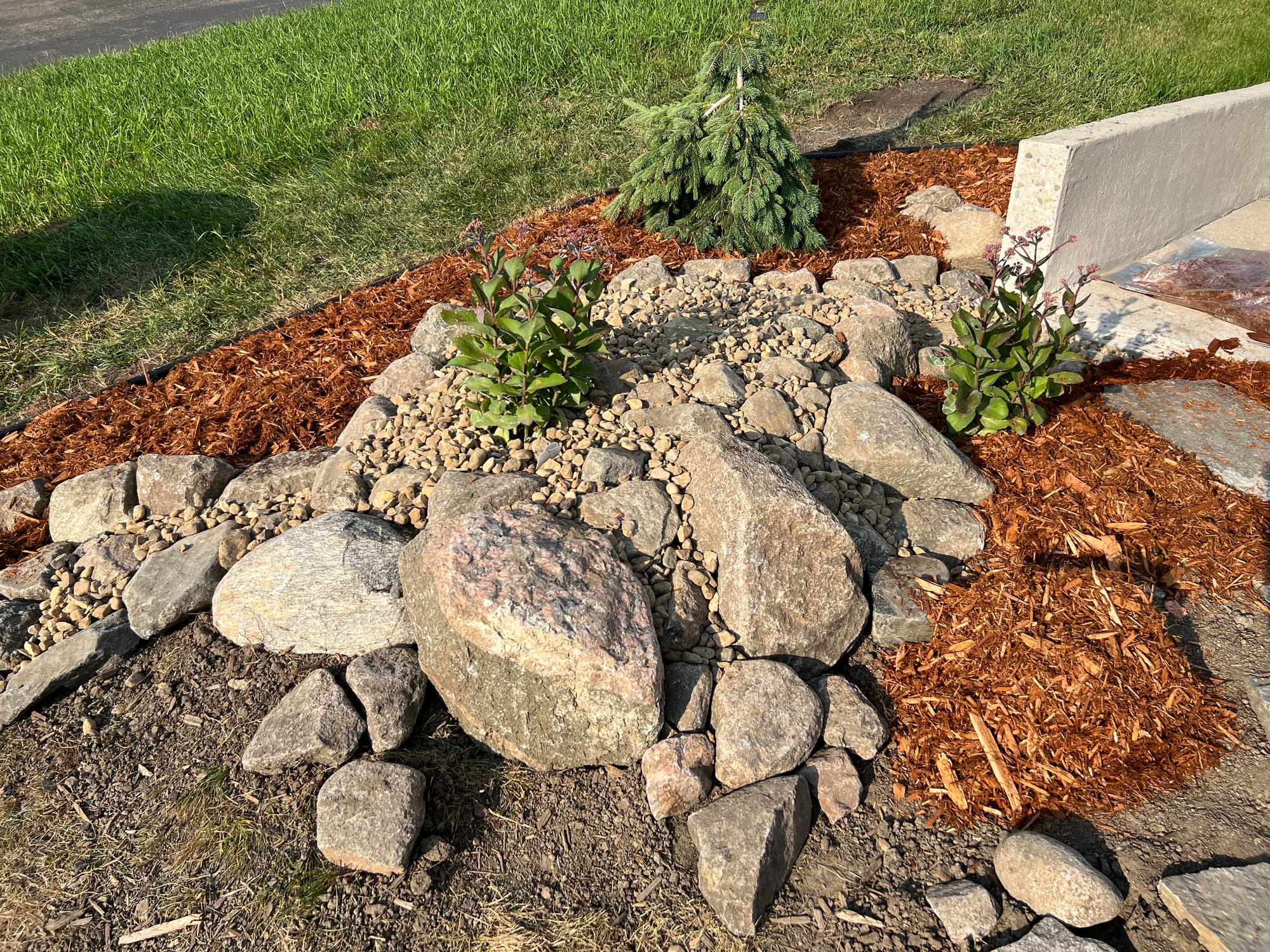
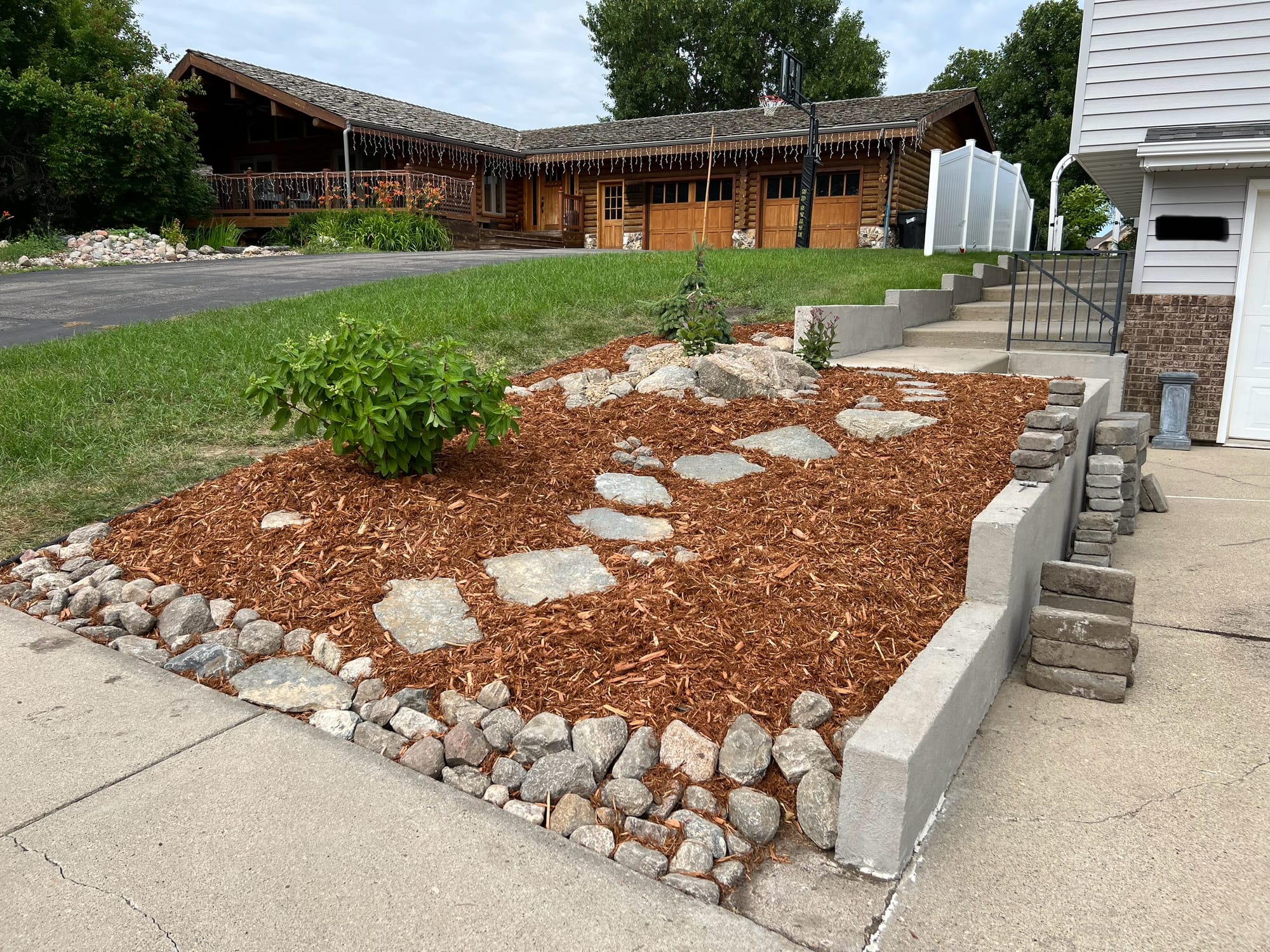
Materials used:
- Western Red Cedar Mulch: 2 cubic foot bags cover approximately 10-12 square feet at a 2-3” depth.
- Granite Boulders: (6-18”) 1 ton covers approximately 50-70 square feet but can vary widely depending on the project.
- Decorative Rock: 1.5” River Rock - 1 ton covers approximately 75-100 square feet at a 2-3 inch depth.
- Pulverized Top Soil: 1 cubic yard covers approximately 100-125 square feet at a 2-3 inch depth.
When you have areas to experiment with new plants, gardening is all the more satisfying. Getting your hands dirty often allows you to learn and grow as a gardener and provides a sense of accomplishment and connection with nature.
As a gardener, creating space where you can play or plant is a must. Our video provides an overview of converting this grass area into a garden bed, including incorporating rock and mulch areas into the new garden space.
Additional videos on landscaping projects and ideas can be found here.
Thanks for stopping by Garden Hike!
A.M. Leonard has an excellent selection of tools and gardening supplies! Enter discount code GARDENHIKE10 when checking out to receive 10% off any order. Click the banner below to enter their online store.

Garden Hike is supported by its audience. When you purchase through links on this site, we may earn a small commission at no additional charge to you.
